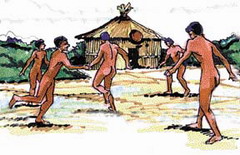The history of medicine in Cuba
- Submitted by: admin
- Editorial Articles
- Culture and Traditions
- 10 / 25 / 2006

The history of medicine in Cuba does not begin as many people could believe with the arrival of Spaniards to the island. We can say, based on chroniclers of the Indies readings and works of some medical historians, that among the natives of this land there was a certain medical practice typical of their culture.
The native medicine in Cuba survived its own people as a real "cultural lending" that colonizers received up to the 18th Century. There are palpable evidences. The City Council of Santiago de Cuba granted a permission to practice medicine to the native healer Mariana Nava who was the first person practicing legally this profession.
In the Taino indigenous population this practice was carried out by the Behique or Bohique a sort of medical priest who became the main victim of missionaries and colonizers since he was a strong obstacle in their mission of enslaving and annihilating the aboriginal cultural heritage.
Those tribe "doctors" did not have any knowledge of anatomy or physiology, their knowledge was completely intuitive. However they seemed to have certain knowledge regarding the main senses taking into account that those functions were related with the environment, dangers and survival.
There are no evidences of any epidemic or infectious disease that our native population had suffered from or had transmitted to the Spaniards; they were rather healthy as the result of their good hygienic and sanitary manners. Nevertheless, even with this exemplary conditions living together they suffered from cough, fever, anemia, neuralgic manifestations and other symptoms that they identified with the term "axe".
According to references found, the behiques treated intestinal parasitism, skin injuries, diarrheas, constipation, asthma, urinary difficulties, pains, acne, injuries, contusions etc. They used to isolate ill people to avoid the spreading of diseases and the burials were in distant areas. They also made the dissection of corpses until they left them like mummies. Those cultures did not practice anthropophagy, consanguinity or human sacrifices. However, they were very conscientious with the responsibility to practice medicine for which they have their rituals. When the chief of the tribe died, the Behique or doctor was buried together with him and her wife.
Water was one of the main resources for the methods of that primitive medical practice as well as some plants like the hierba santa (santa herb), chamomile, guava, pineapple, liana, tobacco, cinnamon, verbena, bitumen,guaguasi, goaconax, jaguar,guacima, guayacan and cristi palm among others.
Comments